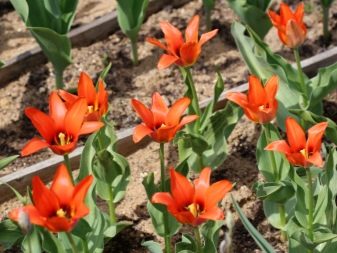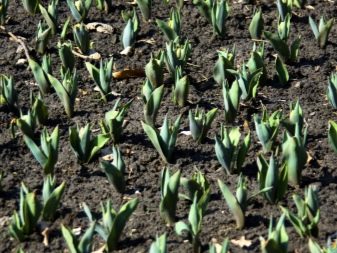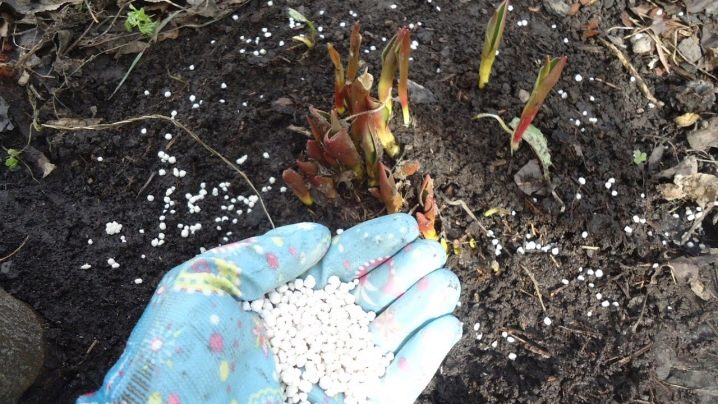My experience of growing whorled coreopsis
For the first time I saw this flower in photographs of Western sites and, as they say, fell in love. However, my search for the Lemon Punch and Mango Punch varieties that captured my heart were unsuccessful. Nevertheless, the fact that on some sites these varieties were listed in the catalogs, although they were not available at the moment, left me hoping to find them one day.
And so, finally, I was still able to order a few divs (which were sold as Lemon Punch) and plant them in my garden. But when the plants finally blossomed, I realized that I was misled, and in front of me is a completely different variety of coreopsis - "Buttermilk". Then I began to study Western sources more carefully to find out why the charming coreopsis of the Punch series are so elusive in our country.
The answer was found pretty quickly. Despite the fact that whorled coreopsis belongs to the 3-4 zone of winter hardiness, some hybrid lines have much lower winter hardiness. In particular, the coreopsis of the Punch line is grown even in Europe as a thermophilic annual, not to mention Russia. And its presence in catalogs with perennials is someone's mistake.
As for the Buttermilk variety, which I purchased, this cultivar is considered to be quite winter-hardy, and easily winters in the regions of zone 5 even without shelter. The appearance of the coreopsis "Buttermilk" seemed to me no less attractive than that of the "Punch" series. In addition, in my conditions, it grew in low fluffy bushes no more than 25 centimeters in height and never reached 40 centimeters stated in the description of the variety.
This coreopsis hibernates without any problems, however, it has one feature. Perhaps this is due to my type of soil (heavy, moist with a high level of groundwater), but the next year after planting, the bushes turned out to be less branched than in the first season, but larger flowers were released. And although most perennials usually grow over time, this coreopsis has been practically "sitting in place" for several years. I had to plant the bushes as close as possible so as not to lose the decorative effect.
Another variety of whorled coreopsis "Zagreb" also came to me as a re-grade. It differs from the coreopsis "Buttermilk" not only in the brighter rich yellow color of the petals, but also in completely different growth characteristics. It has wider, feathery, dark green leaves that are not affected by powdery mildew.
This coreopsis grows rather quickly and requires regular division, and in terms of growth it is also not tall - up to 20 centimeters. And, finally, it is the most winter-hardy representative of the species, which can successfully winter in zone 3. And I even overwintered in flowerpots, where I grew up in compositions with annual plants.
Coreopsis "Zagreb" can be called a perennial for lazy flower growers. But I didn't like it too much because of its too rich yellow color, since I prefer bed shades in the garden.
Coreopsis Buttermilk. Lyudmila Svetlitskaya Coreopsis "Bengal Tiger". Ludmila Svetlitskaya Coreopsis "Zagreb". Lyudmila Svetlitskaya
How to grow and care properly?
In order for beautiful bright-blooming tulips to appear on your flower bed every new season, you need to take proper care of them.
- The soil should be well-drained, dug 30 cm deep, moderately moist. All roots, weeds are removed. Alkaline reactions are preferred; for this, in addition to compost and humus, ash is added to the soil.
- The planting depth is about 3 times the height of the bulb itself, and if the bulbs are very large, as in the Gesner variety, then 15 cm. In clay soil, planting is carried out slightly higher, in sandy soil - deeper.
- To protect from severe frosts, the beds are mulched with peat, but usually tulips are not threatened by freezing.
- Planting is best done in September - October at a temperature of + 5 ° - + 7 ° C, about 20 days before persistent frosts, so that the plant bulb has time to take root.
- Digging of the bulbs is carried out in August, until the leaves of the plants dry out: this will ensure an increase in the size of the bulbs themselves, as well as their number, in the future. After they are dried in a dry ventilated room, examined and sorted, taking away the damaged ones, treated with fungicides, stored until planting.
- During the growing season, it can be fed with mineral fertilizers.
- If reproduction of the bulbs is required, then after the opening of the buds, they are cut off, leaving the stem and leaves. This will provide the bulbs with more nutrients.
- The distance between plants can vary from 5 to 15 cm.


As soon as the tulips sprout, do not overmoisten the soil, as the bulbs may rot, which will lead to the death of the flower. Watering at the rate of 10-40 liters per m², depending on the condition of the soil, once a week. After the end of flowering, watering continues for another two weeks.

For information on how to properly grow tulips, see below.
Interspecific garden hybrids of lilies
Combining the best properties of individual representatives of different groups, interspecific hybrids create a rich variety of varieties of garden lilies and are distinguished by special beauty and exoticism. Their origin can be found from the generally accepted coding of the variety. There are many varieties of such hybrids, the most popular are:
-
LO (Longiflorum-Oriental) - obtained by crossing long-flowered and oriental hybrids. Bud shape - short tubular or funnel-shaped; colors - white or pink with various shade transitions. A pleasant, mild aroma is characteristic. Withstand frosts below 30 degrees. Varieties:
- Prince Promis;
- Triumphant;
-
C-Treasure, etc.
-
OT hybrids obtained from tubular and oriental varieties are called flower bouquets, they have a strong peduncle, inflorescences with 30-40 flowers, and have a strong aroma. For example, the Anastasia variety grows up to 2 meters high, has a gracefully curved stem and purple-red flowers with purple blotches. The double yellow look has an unexpectedly lemon scent and lime-colored flowers. The late-flowering variety Lilium Honeymoon (up to 1 m) pleases with delicate yellow flowers until the end of August.
-
LA (Longiflorum-Asiatic) - hybrids obtained from long-flowered and Asian varieties, differ in flowers of large (25 cm) sizes, dense texture of petals, which provides them with good transportability, unpretentious and frost-resistant, smell thin, not cloying. Varieties:
- Douro;
- Ebro;
- Lucy Wilson;
- Navarin,
- Red Champion;
- Stainless Steel;
-
Rodeo, etc.
Among the new unusual hybrids, the Marlene ball lily variety stands out. As a result of the accretion of several stems (fasciations), the inflorescence, when the flowers open, resembles a blooming ball with a large number of individual flowers. But you need to take into account the fact that the mutation may not occur, in which case the lily will look like a traditional LA hybrid.
In the photo LA-hybrid Marlene:

Marlene
Care rules
In order for the plant to develop, it is necessary to take care of it during its growth, and also take care of following all the necessary recommendations when planting. So, preparing the soil for planting an orange lily should begin 14 days in advance. During this time, humus, peat, ash, urea and superphosphate must be added to the soil. It is recommended to dig up the soil to a depth of no more than 40 centimeters.


Lily bulbs should be planted outdoors in the spring. The most favorable month is May.It is recommended to plant the bulbs at some distance from each other (at least 30 centimeters). After you have placed the bulbs in the holes, you need to cover them with garden soil.

With regard to care, it includes the following activities:
- weeding;
- watering;
- loosening;
- top dressing;
- pest and disease control (if necessary).
Thus, with proper planting and proper care, exotic orange lilies can become a real decoration of your garden, which will be the envy of all neighbors.


See all about orange lilies below.
How to care?
In order for the plant to have a healthy and attractive appearance, as well as to please with abundant flowering, it must be provided with certain care.
- Lighting should be provided sufficiently bright, but without direct sunlight on the leaves. The optimal location is the eastern and western windowsills.
- To increase the humidity and maintain the required level, in addition to spraying the air, you can wrap the pot pan with wet expanded clay and moisten it every day.
- Moistening is carried out as needed, when the top layer of the substrate has time to dry out. The flower equally dislikes both drying out of the soil and excess moisture. In summer, watering should be done more often, about once every 2-3 days, and in winter, reduce the amount to once a week. They take the water settled and not cold.
- Fertilizing the plant is also necessary. To do this, use complex fertilizers diluted with water. They can be both mineral and organic.
- Anthurium sheet plates need to be washed with water or wiped with a damp cloth.
- In order to achieve normal flowering, in winter the plant is placed in a place that is well lit, with a lack of light it will turn yellow.


